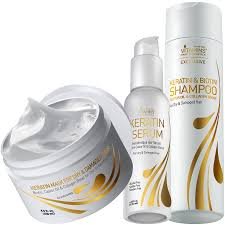
There are numerous treatment options available to address hyperpigmentation, depending on the individual’s skin type, the cause of the discoloration, and the severity of the pigmentation. Some treatments target the skin’s surface, while others work deeper to control melanin production and even out skin tone.
1. Topical Treatments
Topical creams and serums are often the first line of treatment for hyperpigmentation. These products can be used alone or in conjunction with other procedures.
Hydroquinone: A widely used skin-lightening agent, hydroquinone inhibits melanin production. It is available in prescription-strength formulas for more severe cases, and lower concentrations are found in over-the-counter products. It is commonly used to treat melasma, sunspots, and post-inflammatory hyperpigmentation.
Retinoids (Tretinoin): Retinoids stimulate skin cell turnover, helping to fade dark spots by promoting the shedding of discolored skin cells. Tretinoin, a prescription-strength retinoid, is often used in combination with other treatments for optimal results.
Vitamin C: A potent antioxidant, vitamin C brightens the skin by inhibiting melanin production and protecting against further sun damage. It also promotes collagen production and helps even out skin tone.
Kojic Acid: Derived from fungi, kojic acid is another skin-lightening ingredient that works by inhibiting tyrosinase, an enzyme involved in melanin production. It is often found in over-the-counter serums and creams.
Azelaic Acid: An anti-inflammatory and antibacterial agent, azelaic acid is commonly used to treat both acne and hyperpigmentation. It helps lighten dark spots caused by post-inflammatory hyperpigmentation and melasma.
Niacinamide: Also known as Vitamin B3, niacinamide helps reduce the appearance of hyperpigmentation by inhibiting the transfer of melanin to the skin’s surface. It also has anti-inflammatory properties and is suitable for sensitive skin.
2. Chemical Peels
Chemical peels use various acids to exfoliate the outer layers of the skin, promoting the growth of new, more evenly pigmented skin. They are classified based on their depth:
Superficial Peels: These peels use mild acids like alpha hydroxy acids (AHAs) or glycolic acid to gently exfoliate the top layer of skin, helping to fade light hyperpigmentation over time. Superficial peels are ideal for mild cases and require little to no downtime.
Medium Peels: Medium-strength peels, such as those containing trichloroacetic acid (TCA), penetrate deeper into the skin and are more effective for moderate hyperpigmentation. They may require a few days to a week for recovery as the skin peels off to reveal brighter skin underneath.
Deep Peels: Deep chemical peels target more severe pigmentation issues and use stronger acids like phenol. These peels provide dramatic results but require a longer recovery period and should only be performed by experienced dermatologists due to the risk of side effects.
3. Laser Treatments
Laser treatments are highly effective for treating hyperpigmentation, particularly stubborn cases or large areas of discoloration. Different types of lasers are used depending on the skin type and extent of pigmentation.
Fractional Laser Resurfacing: Fractional lasers create micro-injuries in the skin, stimulating the body’s natural healing process and promoting the regeneration of new skin. This helps reduce the appearance of hyperpigmentation while improving overall skin texture.
Intense Pulsed Light (IPL): IPL is not a laser but uses light therapy to target and break down pigmented cells in the skin. It is particularly effective for sunspots, age spots, and melasma, and can treat hyperpigmentation across various skin tones.
Q-Switched Lasers: These lasers specifically target melanin in the skin, breaking it down so that the body can naturally eliminate it. They are commonly used for treating darker pigmentation, such as post-inflammatory hyperpigmentation and melasma.
4. Microneedling
Microneedling is a minimally invasive treatment that involves creating tiny punctures in the skin using fine needles. This process stimulates collagen production and helps reduce the appearance of hyperpigmentation by promoting skin cell turnover. Microneedling is often combined with topical treatments to enhance the penetration of brightening agents like vitamin C and hydroquinone.
5. Cryotherapy
Cryotherapy involves freezing pigmented areas with liquid nitrogen or another cryogenic substance. This treatment destroys the pigment cells, causing the dark spots to peel off over time. Cryotherapy is most effective for treating isolated sunspots or small patches of pigmentation.
6. Dermabrasion and Microdermabrasion
These physical exfoliation techniques remove the outer layers of the skin, helping to reduce the appearance of hyperpigmentation.
Dermabrasion: A more intensive procedure, dermabrasion uses a rotating instrument to sand the skin’s surface. It is often used for deeper pigmentation issues, such as scars or sunspots.
Microdermabrasion: A gentler form of exfoliation, microdermabrasion uses tiny crystals to remove dead skin cells from the surface, revealing more evenly toned skin underneath.
7. Sunscreen and Prevention
Preventing further hyperpigmentation is critical to maintaining the results of any treatment. Daily use of a broad-spectrum sunscreen with an SPF of 30 or higher is essential to protect the skin from UV radiation, which can worsen existing pigmentation and cause new spots to form. Wearing protective clothing, hats, and avoiding direct sun exposure during peak hours also helps in preventing hyperpigmentation.
At Ruziderm, we provide a wide range of high quality cosmetics products made with the finest ingredients. Our products are cruelty-free and environmentally friendly.
92 KG 19 Ave, Covenant Apart Building, Kibagbaga, Kigali
ruziderm@gmail.com
+250 794 100 437
© 2025 Ruziderm. All Rights Reserved.
Powered By EP Fintech Solution ltd
